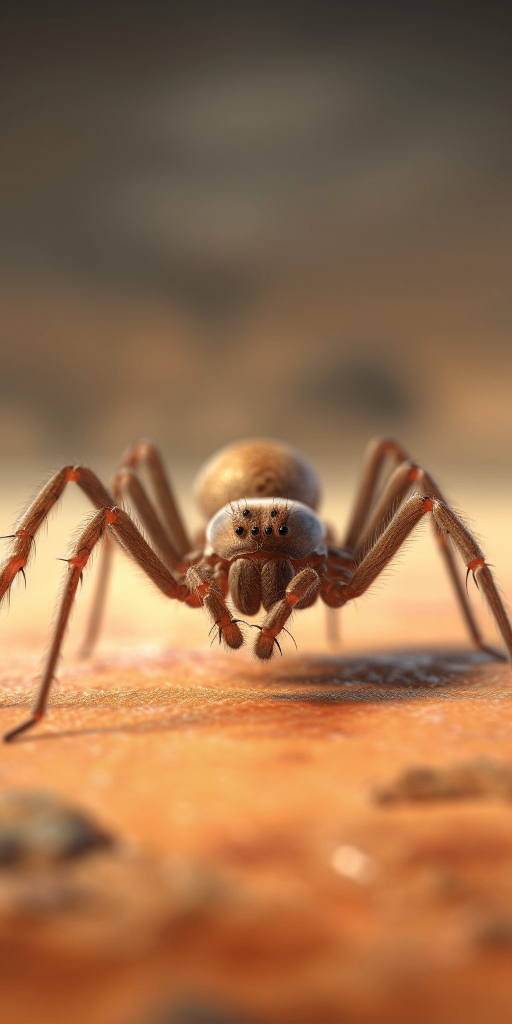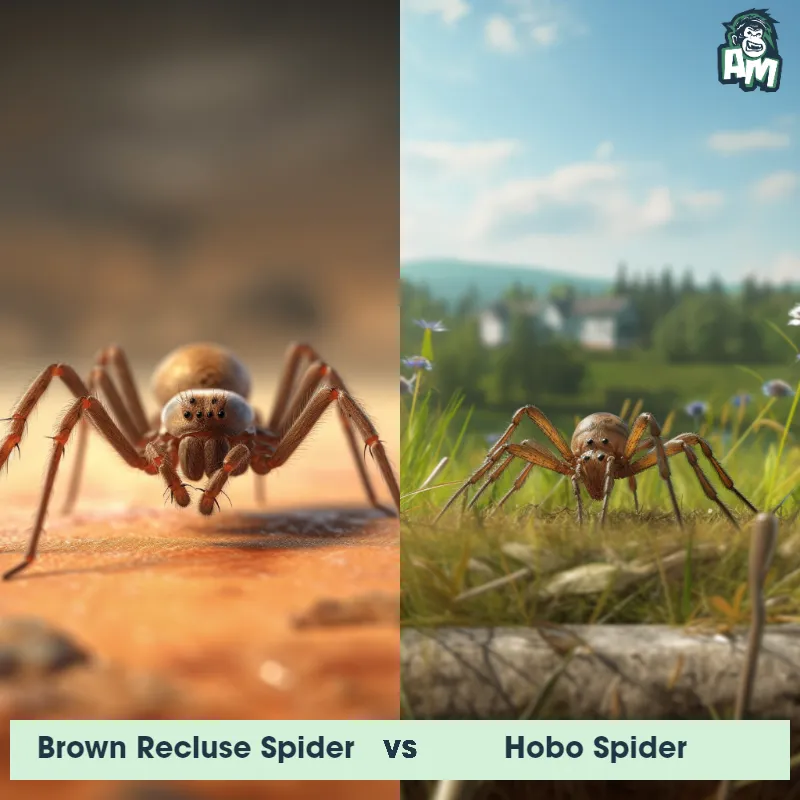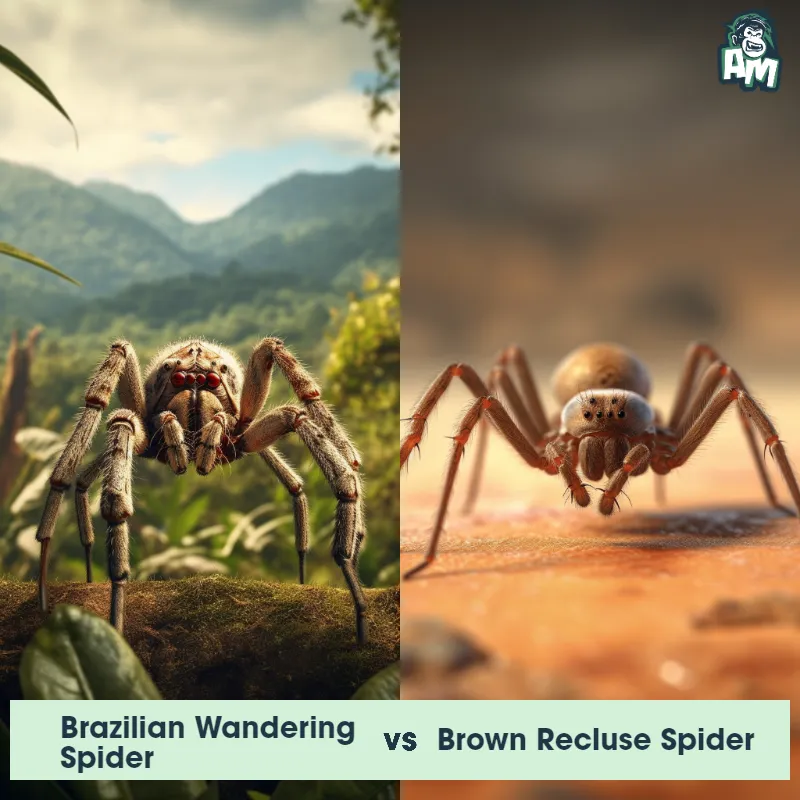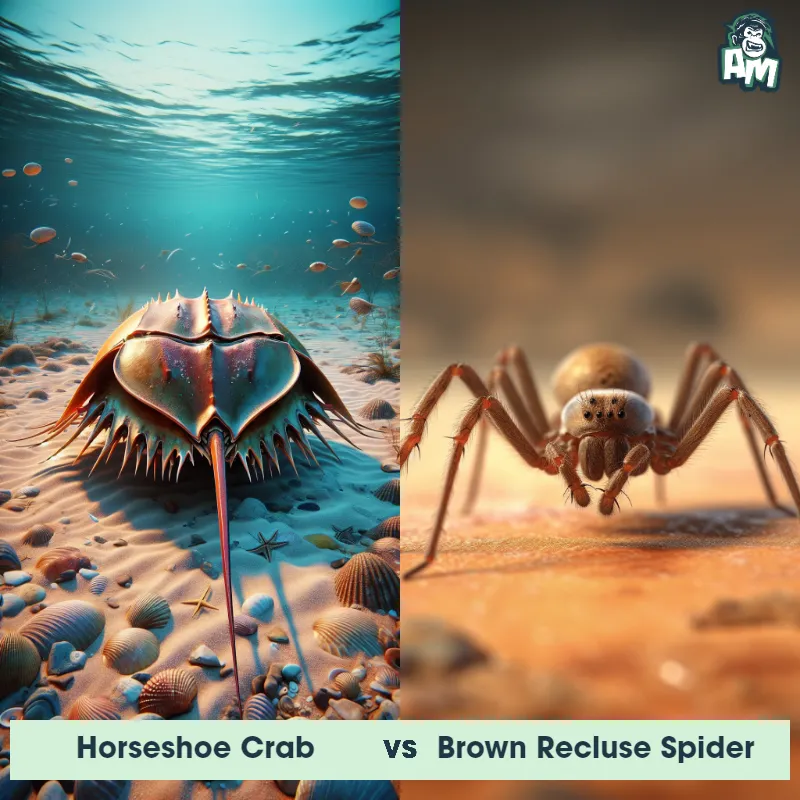The Brown Recluse Spider
The Brown Recluse Spider, also known as the violin spider or fiddleback spider, is a venomous spider known for its distinct violin-shaped marking on its brown cephalothorax. They are typically light to dark brown in color and have long, thin legs. Brown Recluse Spiders are relatively small, with adults reaching about 0.25 to 0.5 inches in body length. They are known for their reclusive behavior and prefer hiding in dark corners, undisturbed areas, and in cluttered spaces. Despite their small size, their venom can cause necrotic wounds in humans if bitten.

| Brown Recluse Spider | |
|---|---|
| Size | 0.25-0.75 inches (0.6-1.9 cm) |
| Weight | 0.0003-0.0005 ounces (0.008-0.014 grams) |
| Speed | Speed: 0.62 mph (1 km/hr) |
| Key Strength | Venomous bite |
| Biggest Weakness | Reclusive behavior |
| Scientific Name | Loxosceles reclusa |
| Family | Sicariidae |
| Habitat | Dark, quiet places such as closets, attics, and basements |
| Geography | United States |
| Diet | Insects such as cockroaches and crickets |
| Lifespan | 1 year - 2 years |

The Brown Recluse Spider
The Brown Recluse Spider, also known as the violin spider or fiddleback spider, is a venomous spider known for its distinct violin-shaped marking on its brown cephalothorax. They are typically light to dark brown in color and have long, thin legs. Brown Recluse Spiders are relatively small, with adults reaching about 0.25 to 0.5 inches in body length. They are known for their reclusive behavior and prefer hiding in dark corners, undisturbed areas, and in cluttered spaces. Despite their small size, their venom can cause necrotic wounds in humans if bitten.
Fun Fact: One interesting fact about the Brown Recluse Spider is that it has the ability to change its color. These spiders are known to be chameleon-like and can vary in shades from yellowish-tan to dark brown, adapting to their surrounding environment.
| Brown Recluse Spider | |
|---|---|
| Size | 0.25-0.75 inches (0.6-1.9 cm) |
| Weight | 0.0003-0.0005 ounces (0.008-0.014 grams) |
| Speed | Speed: 0.62 mph (1 km/hr) |
| Key Strength | Venomous bite |
| Biggest Weakness | Reclusive behavior |
| Scientific Name | Loxosceles reclusa |
| Family | Sicariidae |
| Habitat | Dark, quiet places such as closets, attics, and basements |
| Geography | United States |
| Diet | Insects such as cockroaches and crickets |
| Lifespan | 1 year - 2 years |
Brown Recluse Spider Matchups
We use AI to simulate matchups between the Brown Recluse Spider and other animals. Our simulation considers size, strength, and natural predatory behaviors to determine the most likely outcome.
Brown Recluse Spider: Diet, Predators, Aggression, and Defensive Behaviors
What do Brown Recluse Spiders eat?
Brown Recluse Spiders are carnivorous creatures that primarily feed on other insects and small arthropods. They are known to consume a wide range of prey including ants, beetles, cockroaches, and other spiders. These spiders use their venom to subdue their prey before feeding on them.
Do Brown Recluse Spiders have any predators?
While Brown Recluse Spiders do not have many natural predators, they are sometimes preyed upon by other spiders, such as black widows, as well as certain birds, lizards, and small mammals. Their reclusive nature and toxic venom help protect them from most predators.
Are Brown Recluse Spiders aggressive towards humans?
Brown Recluse Spiders are not typically aggressive towards humans and will usually only bite if they feel threatened or are pressed against the skin. However, their bites can be quite dangerous and should be treated promptly by a medical professional.
Do Brown Recluse Spiders engage in fights with other creatures?
Brown Recluse Spiders are not known to engage in fights with other creatures unless they feel directly threatened. They will usually try to flee and avoid conflict whenever possible. However, if provoked, they may bite as a defensive mechanism.
How do Brown Recluse Spiders defend themselves?
Brown Recluse Spiders primarily rely on their cryptic coloring and reclusive behavior to defend themselves from potential threats. They are masters of camouflage, blending in with their surroundings to avoid detection by predators. If cornered, they may bite as a last resort.
What is the biggest weakness of Brown Recluse Spiders in a fight?
Despite their venomous bite, the biggest weakness of Brown Recluse Spiders in a fight is their small size and fragile exoskeleton. They are vulnerable to larger predators and can be easily injured or killed if physically confronted. This is why they prefer to flee or hide rather than engage in direct combat.
Fun Fact: Another fascinating fact about the Brown Recluse Spider is that they have six eyes arranged in pairs rather than the usual eight eyes found in most spider species. They have three pairs of eyes, with one pair located in the center and two pairs on each side, which gives them a unique appearance.
Fun Fact: Unlike many other spider species that build intricate webs to catch prey, the Brown Recluse Spider does not rely heavily on webbing. They are primarily hunters and prefer to search for their prey, which mainly consists of insects. However, they do create irregular, tangled webs as retreats or for laying eggs, which are usually hidden in secluded areas.














